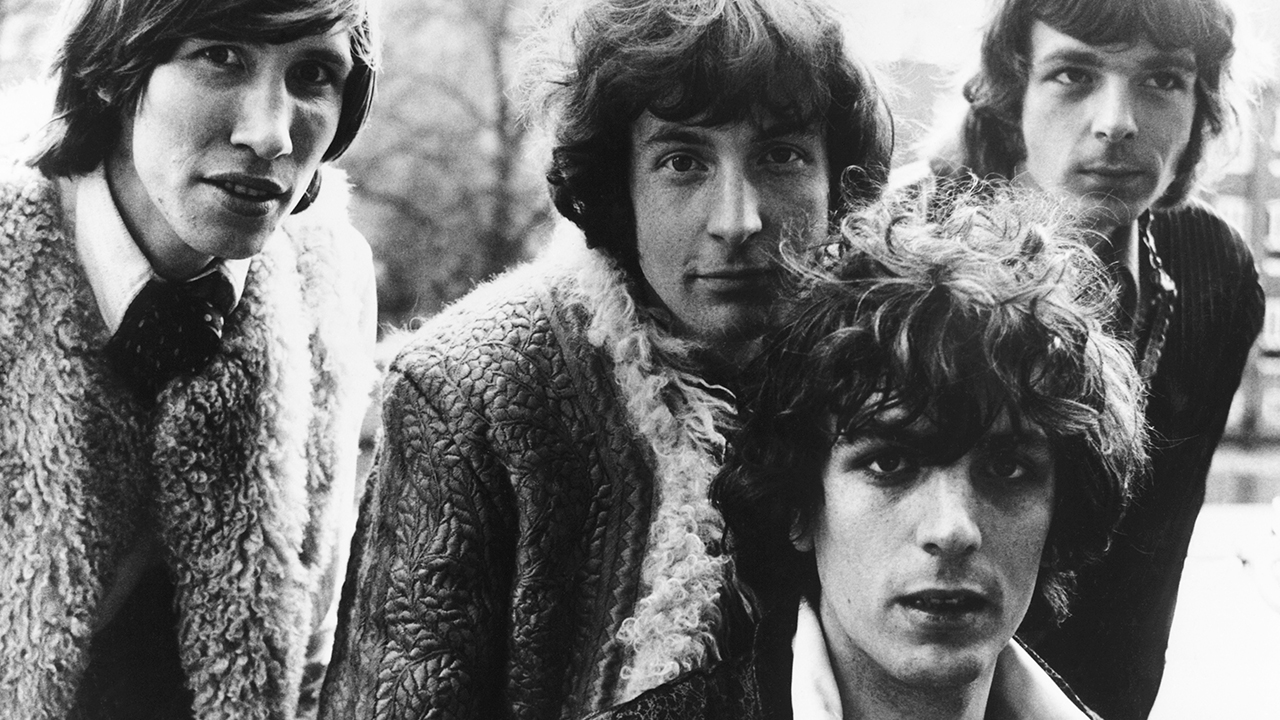
When Pink Floyd launched second single See Emily Play on June 16, 1967, it marked the beginning of their rise to global success – but also the beginning of their end for early leader Syd Barrett.
Released in March 1967, Pink Floyd’s first single Arnold Layne reached Number 20 on the UK chart. It seems tame now – but Syd Barrett’s whimsical tale of the moonlit clothes thief was considered transgressive by broadcasters, and its airplay soon dwindled.
Trippy follow-up See Emily Play was less contentious, released in June 1967 and peaking at Number 6 the following month. “We were convinced we’d go higher,” Nick Mason told Prog in 2010. “We were sure A Whiter Shade Of Pale would drop out week to week. But of course it didn’t – it just stuck there!”
As Prog reported in a 2023 rundown of the 10 most important Floyd concerts, See Emily Play had been written by Barrett for a 1967 show billed as Games For May, and shared that title in its earliest form. The event at London’s Queen Elizabeth Hall was described as “a space age relaxation for the climax of spring – electronic composition, colour and image projection, girls, and the Pink Floyd.” What was not to like?
The performance included “more or less what was to become The Piper At The Gates Of Dawn, and premiering Emily.” At one point “someone dressed as an admiral gave out daffodils to the audience, while a bubble machine stained the seats – allegedly resulting in a lifelong ban at the venue for the group.”
Alan Freeman introduced the band for their first appearance on Top Of The Pops. “I suppose we expected more out of it than it could deliver,” the drummer reflects. “It was a bit like going through sheep dip: you’re brought in, you do the rehearsal, then mime rather than actually play live.
“My main memory is of going into hair and make-up and finding all the road crew having their hair done! Nobody knew who anyone was, so as long as you had long hair, if you wandered in to that area someone would wash your hair.
“But the show was an anticlimax for all the inevitable reasons – you’d been on telly but it didn’t change the world. The important stuff was still to go out and play.”
Syd was already wandering off into that area of not wanting to be a pop star
Nick Mason
The success of See Emily Play was a milestone in the Pink Floyd story, and it’s still their second highest-charting single by a long chalk, after 1979’s Another Brick In The Wall (Part 2). Its three performances on Top Of The Pops also foreshadowed the troubled times ahead for the song’s mercurial writer.
“By the time we went back for the second show Syd was not that happy about it,” says Mason. “He was getting a bit weird, so that made it all the more difficult. He felt that John Lennon didn’t do Top Of The Pops, so why should he? He was already wandering off into that area of not wanting to be a pop star.
The BBC later wiped all three Top Of The Pops appearances, although a degraded video recording of their first performance, on July 6, was revealed in 2009.
Once described by Prog as “the perfect marriage of Floyd’s psych sound and Barrett’s lyrical genius,” a subject that’s lingered over the decades is the identity of the song’s titular Emily. It’s often assumed to be the Right Honourable Emily Young, a politician’s daughter who earned the nickname ‘the psychedelic schoolgirl’ at London’s UFO Club, and who later became a revered artist.
Roger Waters said in 2004 that “Emily could be anyone. She’s just a hung-up chick, that’s all.” But Syd’s girlfriend Jenny Spires – ‘Jennifer Gentle’ in Lucifer Sam – told Prog in 2022: “Syd loved the name Emily; quite unusual then, and used to say, ‘If I ever have a daughter I want to call her Emily.’ ‘Emily’ was Syd’s Alice.”
As Barrett increasingly rejected the idea of being a pop star, and became more erratic in his behaviour, the band would move on without him. “But See Emily Play was a very important stepping stone in our career,” Mason said. “It was a big part of the journey.”







